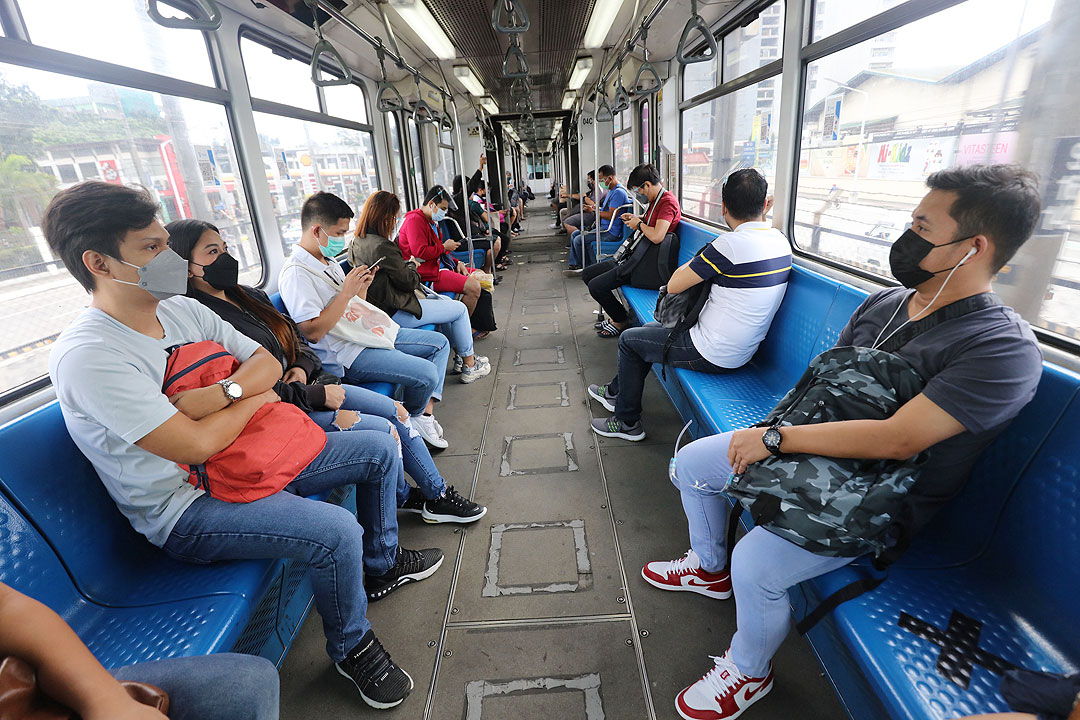OCTA cites continued drop in COVID-19 infections

By Kyle Aristophere T. Atienza, Reporter
DAILY coronavirus infections in the Philippines might drop to 4,000 by mid-February and to as low as 1,000 by the end of the month, according to researchers from the country’s premier university.
Daily infections in Manila, the National Capital Region (NCR) might return to the pre-Omicron surge level by the end of February if the decline continues, OCTA Research Group fellow Fredegusto P. David tweeted at the weekend.
The national average daily cases hit 8,442 on Feb. 1 to 5, he said.“The number of new COVID-19 cases around the country continues to decrease.”
The average daily cases fell to 17,025 on Jan. 25 to 31 from 28,666 a week earlier and 34,958 two weeks earlier, he added.
He also said the virus reproduction number had fallen to 0.55 as of Feb. 2 from 0.93 on Jan. 26.
Mr. David said the seven-day positivity rate in the Philippines had gone down to 25% from 34%, while the country’s hospital bed occupancy rate was down to 40% from 49%.
Of the 7,689 cases on Saturday, 877 came from Metro Manila. The capital region reported 1,535 cases on Feb. 4, but Mr. David said that “a high percentage of this was due to a backlog.”
The Department of Health (DoH) reported 8,361 coronavirus infections on Sunday, bringing the total to 3.6 million.
The death toll hit 54,526 after 312 more patients died, while recoveries rose by 18,431 to 3.43 million, it said in a bulletin.
It said 21.5% of 38,675 samples on Feb. 4 tested positive for COVID-19, still above the 5% threshold set by the World Health Organization (WHO).
Of 126,227 active cases, 4,864 did not show symptoms, 116,598 were mild, 3,008 were moderate, 1,447 were severe and 310 were critical.
DoH said 79% of the latest cases occurred from Jan. 24 to Feb. 6. The top regions with new cases in the past two weeks were Metro Manila with 863, the Davao region with 683 and Western Visayas with 657. It added that 25% of new deaths occurred in February and 18% in January.
The agency said 264 duplicates had been removed from the tally, 194 of which were recoveries, while 243 recoveries were relisted as deaths. Two laboratories failed to submit data on Feb. 4.
It said 42% of intensive care unit beds in the country had been used, while the rate for Metro Manila was 35%.
The Philippines and other countries have started easing lockdowns amid hopes that the highly mutated Omicron variant, which was first detected in South Africa, might have peaked.
The country is set to allow the entry of fully vaccinated nationals of non-visa countries starting Feb. 10, almost two months after it suspended a plan to welcome back foreign tourists due to the threat of the Omicron variant.
Mr. David said a potential influx of foreign travelers might lead to another spike. ”Spikes in cases could happen but this is dependent mostly on a new variant,” he said in a Facebook Messenger chat.
The World Health Organization has said some countries with high immunity rates, strong healthcare systems and decreasing coronavirus infections and deaths could now consider easing restrictions, according to a report by the Los Angeles Times.
The Philippines is scrambling to vaccinate more people as it reopens the economy.
It had fully vaccinated 59.81 million people as of Feb. 4, while almost 60.66 million have received their first dose, data from the Health department showed. More than eight million booster shots have been given out.
COVOVAX
Meanwhile, local drug distributor Faberco Life Sciences, Inc. has submitted to Philippine authorities the data to allow the use of the COVID-19 vaccine made by Serum Institute of India for children aged 12 to 17.
“This could help the government increase the coverage rate and achieve the overall goal of 90% covid vaccination rate nationwide,” Luningning Villa, the company’s medical director, said in an e-mailed statement.
Covovax, which is produced by the Serum Institute under license from Novavax, Inc., is the first protein subunit vaccine that was authorized for emergency use in the Philippines in November.
Protein subunit vaccines pick out only specific fragments of a virus to trigger an immune response, Faberco said.
“These protein fragments can neither replicate, nor can it cause COVID-19,” it said, noting that the technology in Covovax has been used for years in some vaccines for hepatitis B, shingles and whooping cough, and has been proven harmless and safe.
Covovax is 90.4% effective against the coronavirus and offers 100% protection against moderate and severe disease, Faberco said.
It is 93.2% effective against the predominantly circulating variants of concern and variants of interest, and 91% effective in seniors and seriously ill people, it added.
The vaccine is expected to be available in the country next month.



